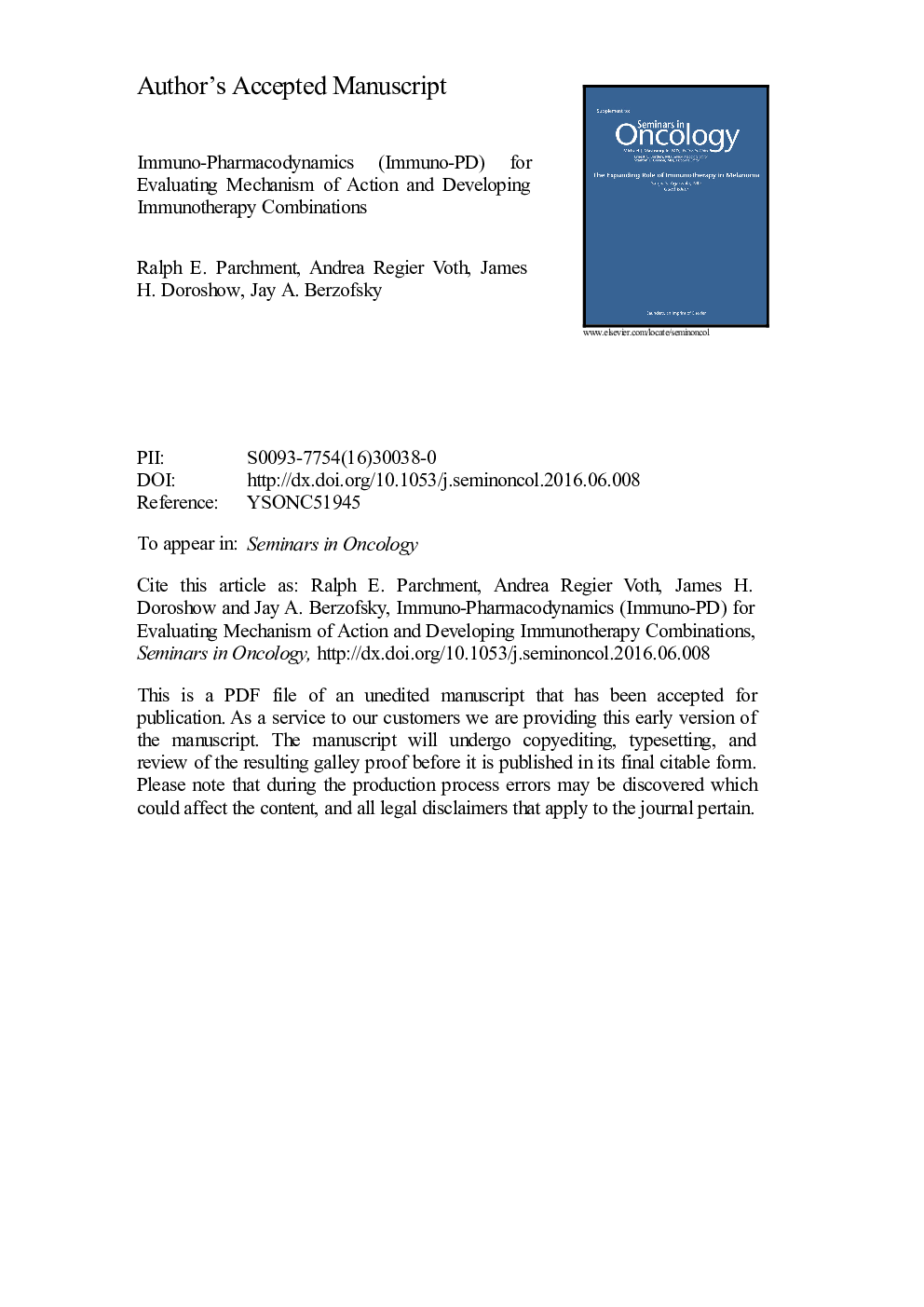| کد مقاله | کد نشریه | سال انتشار | مقاله انگلیسی | نسخه تمام متن |
|---|---|---|---|---|
| 5530255 | 1401724 | 2016 | 69 صفحه PDF | دانلود رایگان |
عنوان انگلیسی مقاله ISI
Immuno-pharmacodynamics for evaluating mechanism of action and developing immunotherapy combinations
دانلود مقاله + سفارش ترجمه
دانلود مقاله ISI انگلیسی
رایگان برای ایرانیان
موضوعات مرتبط
علوم زیستی و بیوفناوری
بیوشیمی، ژنتیک و زیست شناسی مولکولی
تحقیقات سرطان
پیش نمایش صفحه اول مقاله

چکیده انگلیسی
Immunotherapy has become a major modality of cancer treatment, with multiple new classes of immunotherapeutics recently entering the clinic and obtaining market approval from regulatory agencies. While the promise of these therapies is great, so is the number of possible combinations not only with each other but also with small molecule therapeutics. Furthermore, the observation of unusual dose-response relationships suggests a critical dependency of drug effectiveness on the dosage regimen (dose and schedule). Clinical pharmacodynamic (PD) biomarkers will be useful endpoints for confirming drug mechanism of action, evaluating combination therapies for synergy or antagonism, and identifying optimal dosage regimens. In contrast to conventional PD in which drug action occurs entirely within a single target cell (ie, is self-contained within the malignant cell), immunotherapy involves a complex mechanism of action with sequential steps that propagate through multiple cell types, both normal and malignant. Its intercellular pharmacology begins with molecular target engagement either on an immune effector cell or a malignant cell, followed by stimulatory biochemical and biological signals in immune effector cells, and then finally ends with activation of cell death mechanisms in malignant cells lying within a certain distance from the activated effector cells (immune cell-tumor cell proximity). Evaluating such “trans-cellular pharmacology,” in which different steps of drug action are distributed across multiple cell types, requires novel microscopy and image analysis tools capable of quantifying PD-biomarker responses, mapping the responses onto the cellular geography of the tumor using phenotypic biomarkers to identify specific cell types, and finally analyzing the spatial relationships between biomarkers in the context of each cell's biological role. We have termed this form of nearest neighbor image analysis of drug action “proximity PD microscopy,” to indicate the importance of the location of the PD-biomarker response within the cellular landscape of a tumor specimen. We discuss herein the major modes of immunotherapy, and lay out a blueprint for using PD assessment to optimize dosage regimens of single agents and guide development of combination immunotherapy regimens, using PD1/PD-L1 immune checkpoint inhibition as a case study.
ناشر
Database: Elsevier - ScienceDirect (ساینس دایرکت)
Journal: Seminars in Oncology - Volume 43, Issue 4, August 2016, Pages 501-513
Journal: Seminars in Oncology - Volume 43, Issue 4, August 2016, Pages 501-513
نویسندگان
Ralph E. Parchment, Andrea Regier Voth, James H. Doroshow, Jay A. Berzofsky,